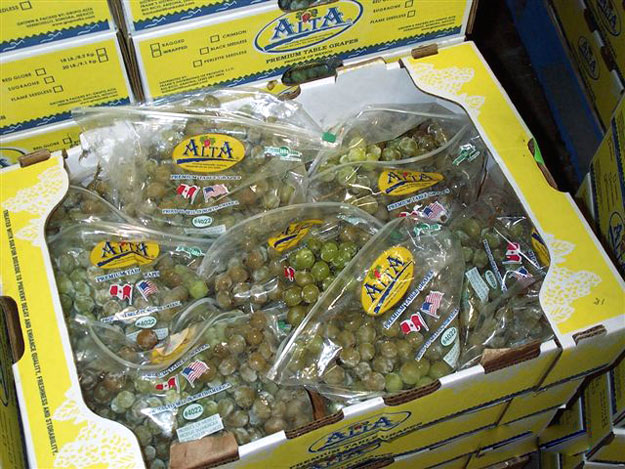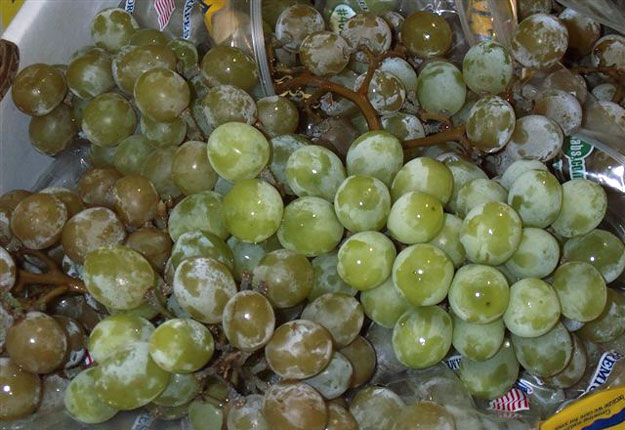With the Chilean fruit hitting your warehouses, always be on the lookout for freezing injury. Sometimes in Table Grapes it is difficult to detect, especially if the freezing injury is only slight, or only located in a few pallets. Remember, the grapes arriving from Chile are transported by ship, being on the water for 10 or more days. The grapes are stored in the very low 30’s on the ship, to ensure fresh product arrives. After being unloaded from the ships the grapes may be placed in a cooler, until shipment. And finally, the grapes are loaded onto refrigerated trailers, and sent to your warehouse. As you can see there are many opportunities for the grapes to be exposed to freezing temperatures, throughout the cold chain.


If the grapes have been frozen, they will usually be easy to identify, as they become badly discolored, and will be weak and soft. If the grapes have only been frozen slightly, the berries may not show any discoloration until they warm up. But even if the grapes have only been slightly affected you should be able to notice the freezing injury affecting the stems. Since the berries have a high amount of sugar, their freezing point is about 28° F. Stems will usually freeze at higher temps, and will become glassy and translucent. So always examine the stems closely if you suspect the grapes have been subjected to freezing temperatures.
All freezing injury is considered a serious damage defect; the U.S. Grade Standards allow a tolerance of 4%, with an individual container tolerance of 8%. Chances are if you find some lugs with freezing injury the serious damage tolerance will be exceeded and the grapes will fail to grade U.S. No. 1.

No Comments on “Table Grapes- Freezing”